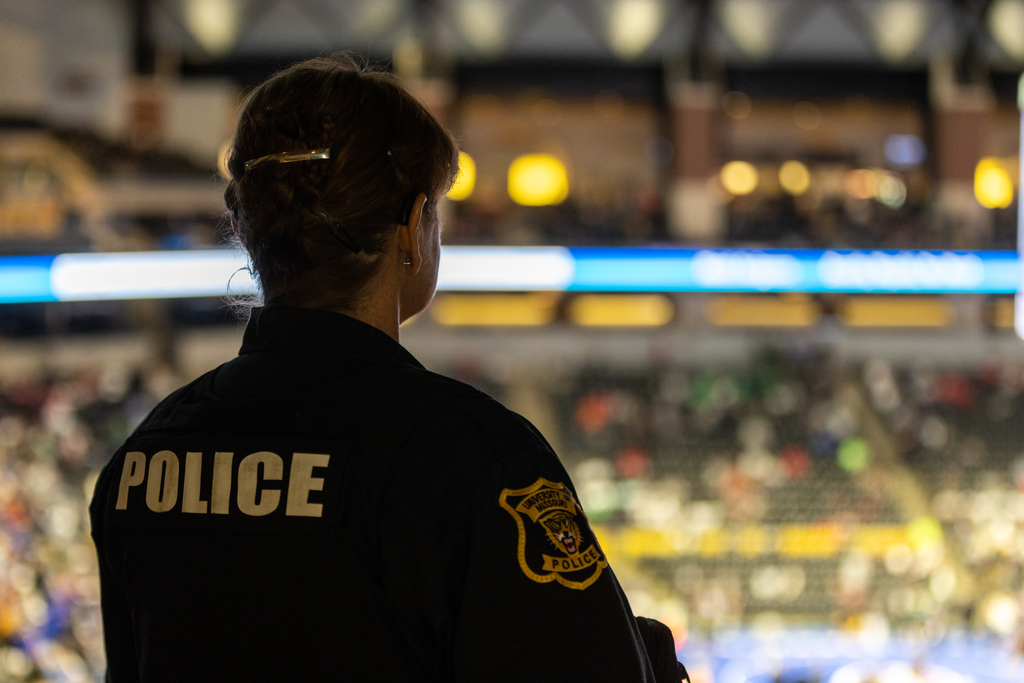The University of Missouri Police Department (MUPD), although not officially titled as a police department until 1971, has roots dating back to the 1880s when members were employed as “watchmen” (Fasl, 2006). Their duties included upholding and enforcing university rules and regulations. The first recorded watchman, Andrew Jackson Rummans, was reported to have carried a “star, club, revolver, and a bull’s eye lantern” as he conducted his rounds. Additional watchmen were added in the early 1900s, and they were eventually granted limited police powers by the city of Columbia in 1923. Following this move, their numbers, as well as their responsibilities, increased.
Due to the influx of vehicles on campus in the 1950s, watchmen were given the authority to write tickets. In 1954, Richard N. Long, an instructor in the University’s Police Science Division, was placed in the newly created Director of Traffic Safety and Security position. Although the Department of Traffic Safety and Security would not be named the University Police Department until 1971, Richard Long holds the title of MUPD’s first Chief. Campus officers began attending the State Highway Patrol Basic Police Academy and were provided .38 caliber revolvers in 1963. Commissioned personnel became known as “patrol officers,” but MUPD retained the watchman position (renamed security officers in the 2000s) for non-commissioned personnel who were responsible for securing campus buildings.
In the 1960s, the organizational processes, policies and standard operating procedures were formalized. In the 1970s, incident reporting based on crime type began. This collection and evaluation of data allowed identification of crime trends, methods, causes and high-risk locations. The 1970s also brought the introduction of the Crime Prevention Unit (the first of its kind in Boone County) and the separation of Parking Operations from the Police Department. In the 1980s, the Crimes Management System and CAD (Computer Aided Dispatch) were introduced.
In 1998, the federal government passed the Jeanne Clery Disclosure of Campus Security Policy and Campus Crime Statistics Act, formerly known as the Student Right to Know Act. This law required colleges and universities receiving federal funding to disclose reported criminal activity on their campuses. The terrorist attacks on September 11, 2001 brought nationwide changes to law enforcement’s way of doing business. MUPD, like other law enforcement agencies in the nation, began training in preventing and handling terrorist activities. Additionally, they joined the local Joint Terrorism Task Force and trained one officer as a bomb detection K-9 officer and one sergeant as a bomb technician.
Over the years, as active shooter and terrorist threats have increased, MUPD has increased training for its officers as well as purchased necessary equipment (rifles, door breaching materials, etc.). Additionally, officers now have cameras in their patrol vehicles and body worn cameras for better accountability and transparency. MUPD officers also carry less-lethal shotguns (beanbag guns) and Tasers to increase the opportunities to take control of dire situations without having to utilize lethal force.
Department Heads
1954-1961 – Chief Richard Long
1961-1968 – Chief Bernard Brannon
1968 – Interim Chief Ronald E. Mason
1968-1970 – Chief Harvey Cottle
1970 – Assistant Director Gordon Gear
1970-1972 – Chief Sterling Baker
1972-1995 – Chief Ronald E. Mason
1995-1996 – Chief C.G. McLaughlin Jr.
1996-1998 – Interim Chief J. Scott Shelton
1998-2003 – Chief Fred Otto III
2003-2015 – Chief Jack Watring
2015-2020 – Chief R. Douglas Schwandt
2020-Present – Chief Brian Weimer
